Blueprint for photography
Mary Hinsen
09 October 2020, 4:54 PM
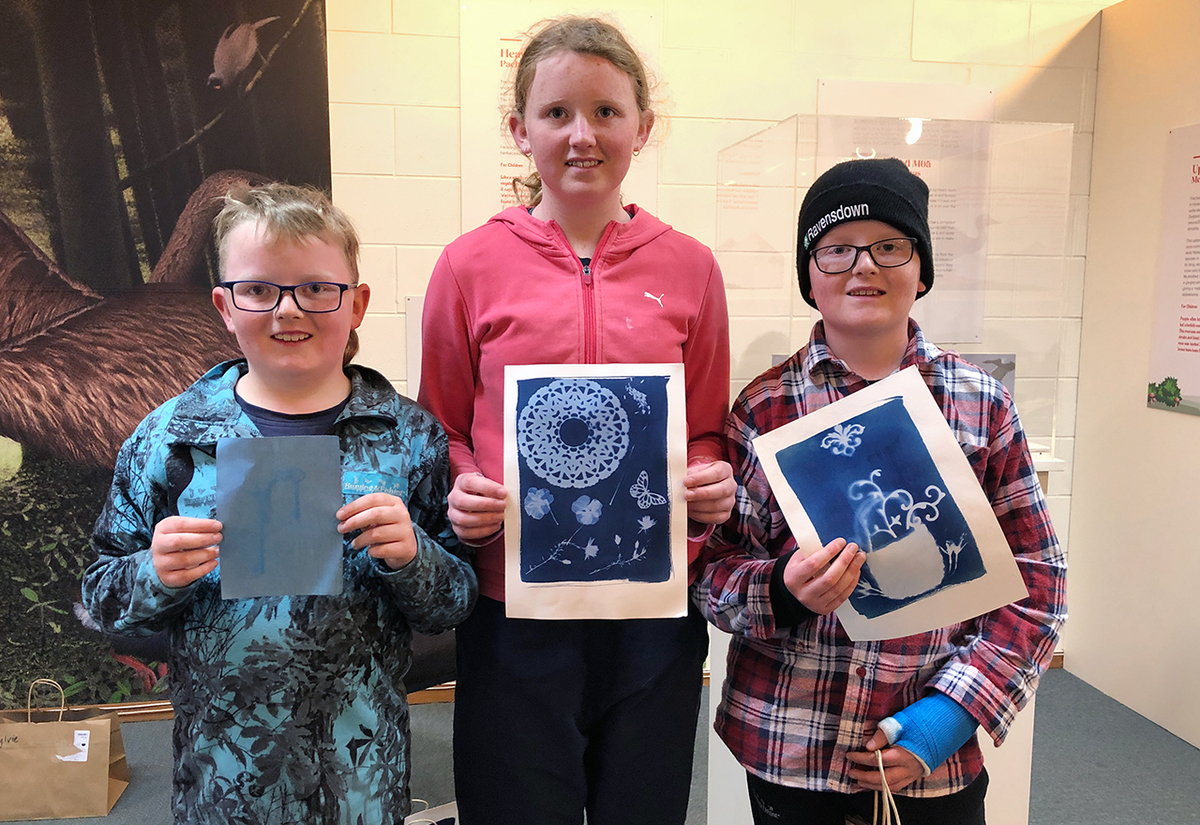 Jake (8), Hannah (12), and Riley Spittle (10) made photographs without a camera on Thursday at Cromwell museum.
Jake (8), Hannah (12), and Riley Spittle (10) made photographs without a camera on Thursday at Cromwell museum.As an extra to her current exhibition at the Cromwell museum, historic photography expert and artist Annemarie Hope-Cross showed children how to make photographs without a camera.
Annemarie’s exhibition at the museum features her unique work utilising historic photographic processes, including cyanotypes.
Cyanotype is a photographic printing process invented in 1841 by scientist and astronomer Sir John Herschel. It was used by engineers well into the 20th century as a simple and low-cost process to produce copies of drawings, referred to as blueprints. This is the process Annemarie explored with a keen group of children at a school holiday workshop on Thursday.
The cyanotype process uses a mixture of iron compounds, which oxidise when exposed to UV light and washed in water, producing striking Prussian blue images – or cyanotypes.
Annemarie said the workshop had been for kids of all ages, allowing them to make cyanotypes utilising our beautiful Central Otago sunshine.
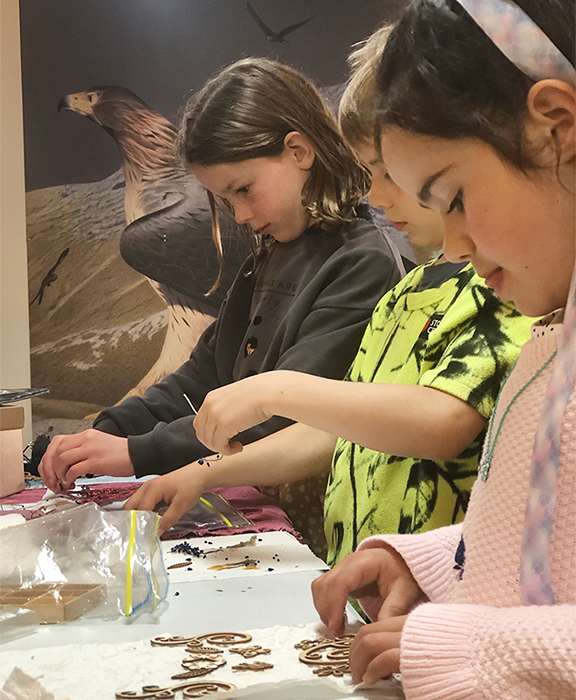
Children first created a design for their photograph, using flowers, seeds, shapes and everyday objects.
“Cyanotypes are a very early photographic process that we can use, so the kids appreciate and see in real time a chemical reaction occurring between the UV of the sunshine and chemicals painted onto the paper.”
Annemarie said the young participants first designed how they wanted their photograph to look, using plants, shapes and everyday objects. They then placed this arrangement on pre-prepared photographic paper, and held it all down with a sheet of glass.
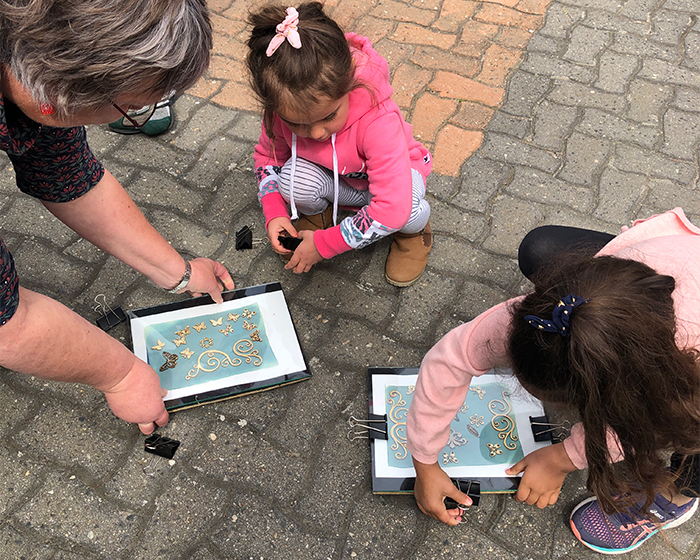
Designs were placed under glass in the sun, and left to expose.
Their completed designs were laid outside in the sun to expose. Exposure times varied, depending on whether the sun was out or behind the clouds, and each budding artist watched keenly for their print to turn a denim blue.
“Then, when the image is ready they take it to the little stream, wash away the excess chemicals and then dry their beautifully exposed photos.”
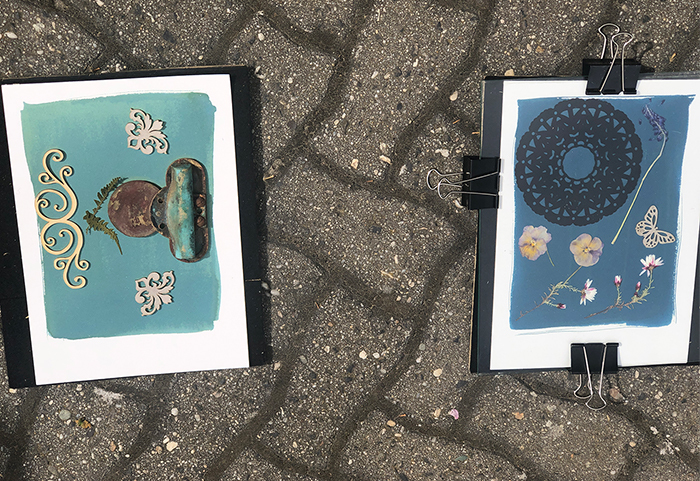
The colour changed in uncovered areas of the design, as the chemicals reacted in UV light.
The children watched with interest, noting the blue become more intense as it dried. Most went back to create another, finding the process very exciting.
“They made some lovely designs,” Annemarie said.
“And they are learning to watch for the differences through the exposure process and understand when it’s ready to be processed.”
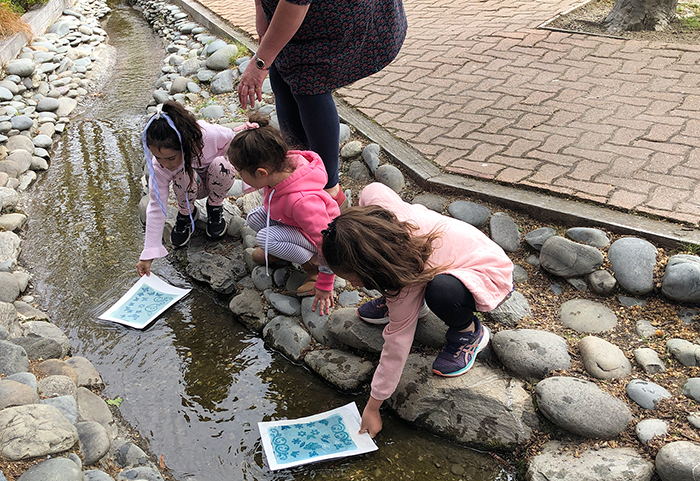
Photos were washed in the stream and dried, ready to be taken home.
“They’ve picked it up really quickly; I didn’t think they’d pay much attention to that – but they have.”
“It’s really quite quick and I like how it turned out,” said 8 year old Sylvan Wood.
“I like the effect I created with pansies; they weren’t flat so they are soft compared to the hard edges of the other objects,” said 12 year old Hannah Spittle.
“I liked how the light changed it and made my design into a picture,” said 7 year old Sophia Hinsen.
“Making them (the photos) was fun, and I liked getting in the stream,” said 5 year old Lily Hinsen.
Appvertisement

